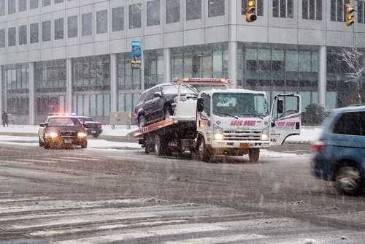Snow and ice-caked roads can be tricky to navigate, and particularly in the mountains. Colorado has some of the highest mountain roads in the country. Winter weather on high mountain passes can create hazardous driving conditions. Some of the most dangerous mountain roads for winter driving in Colorado include:
 I-70 Mountain Corridor: This major east-west interstate highway has steep grades, congested traffic, and wild weather causing slick roads and other hazards.
I-70 Mountain Corridor: This major east-west interstate highway has steep grades, congested traffic, and wild weather causing slick roads and other hazards.- I-25: This is a main interstate that travels north and south and serves as the primary connection from Denver to Colorado Springs. With ongoing construction and rush hour traffic, this stretch of highway can become dangerous when winter weather strikes.
- Loveland Pass: This 8.7-mile road rises high into the mountains at nearly 12,000 feet. Loveland Pass is the highest road in the country kept open on a year-round basis. With snow, blowing winds, and freezing temperatures, travel is discouraged on this high alpine road.
- Monarch Pass: This steep and winding road will take you into the mountains at 11,312 feet along the Continental Divide between Gunnison and Poncha Springs. You’ll be driving to the snowy slopes of Monarch Mountain. Monarch Pass can become treacherous in severe weather conditions.
Tips for Driving in the Mountains Safely
If you live in Colorado, you probably have experience driving in winter weather conditions. In addition to the knowledge you have gained with that experience, the following simple tips can help keep you safe on the road when the snow flies:
- Drive as smoothly as possible: The trick is to be super smooth with the steering wheel, accelerator, and brakes. Jerky control can make tires lose their grip on slippery roads. Every movement you make should be deliberate, gradual, and gentle.
- Look far ahead of you: Look as far down the road as possible when driving in slippery conditions. Anticipate what is coming up next. Slow down for turns and steep curves. Allow triple the normal stopping distance for snow, and even more for ice. Driving takes extra concentration on icy or snow packed roads.
- Look where you want to go: If your car starts to skid, always look where you want to go, not where the car is heading. Use your peripheral vision for anything else. You almost always end up where you are looking.
- Manage the skid: If you are driving on mountain roads in Colorado during winter, sooner or later you are likely to skid. When this happens, do not panic and start stabbing at the brakes. In a front-wheel skid, when the car turns in a wider arc than expected, ease off the gas, and the tires should regain traction. In a rear-wheel skid, quickly turn the steering wheel in the same direction the rear is sliding. If the rear of the vehicle is swinging to the left, turn the wheel to the left, ease off the accelerator, and stay off the brakes until the rear wheels regain traction.
Drivers Can Still Be Held Liable for Negligence In Winter Conditions
Most people in Colorado have seen overconfident drivers blow by on snow-packed roads. Clearly, these drivers don’t realize the risks they are taking. They may also be unaware that they can be held liable for negligence, even in straitened winter weather conditions.
If you have been hurt in crash that was someone else’s fault on a Colorado mountain road, contact The Bussey Law Firm, P.C. at (719) 475-2555. Our Colorado Springs auto accident lawyer could help you fight for the compensation you deserve.
